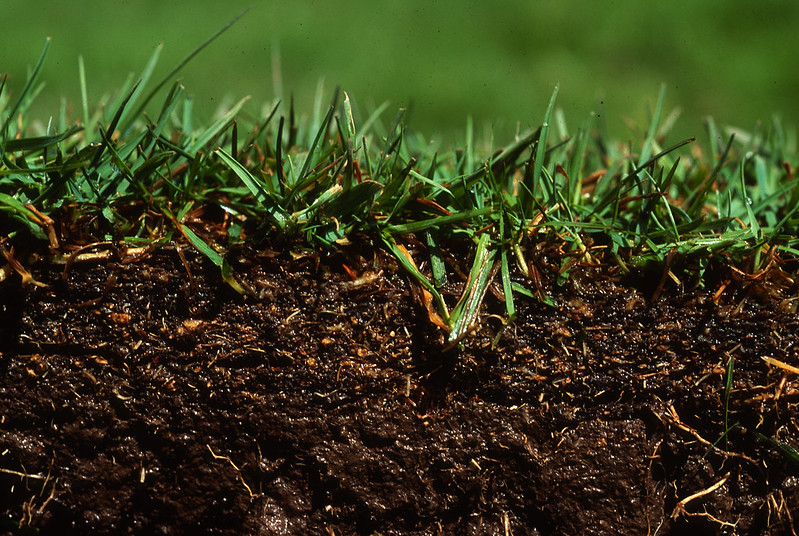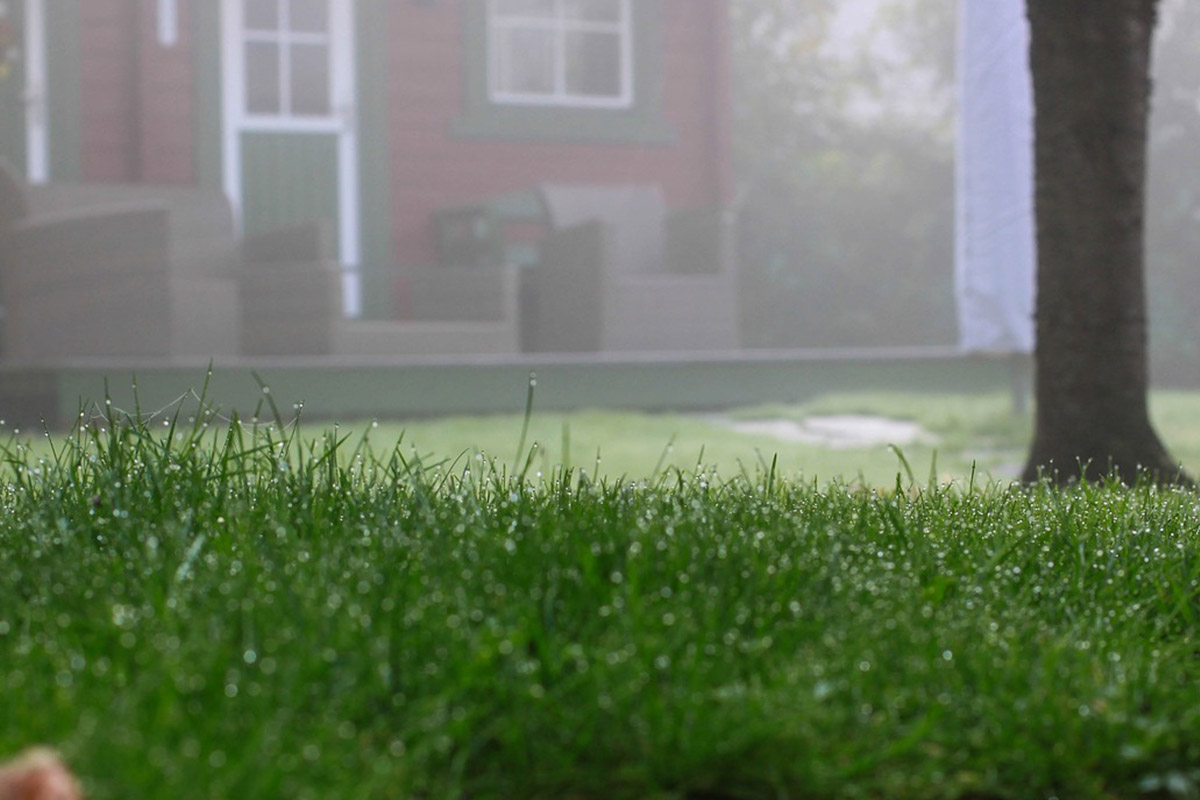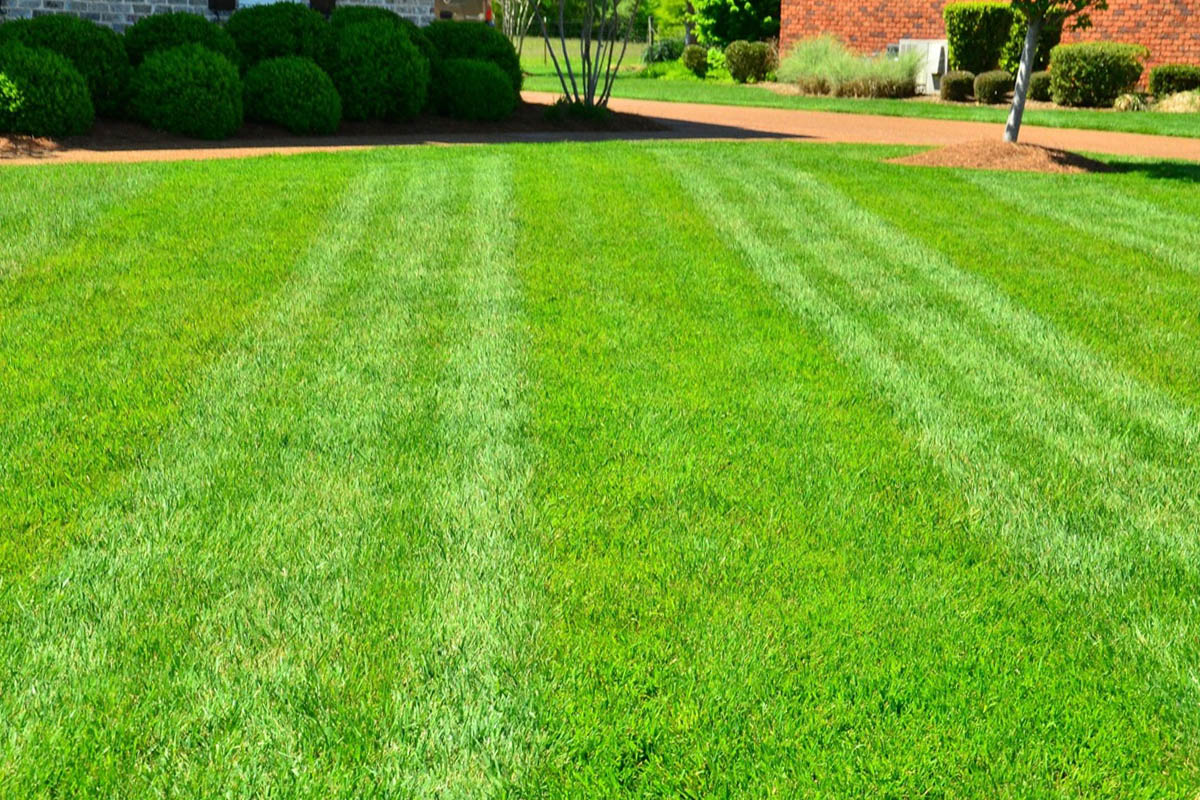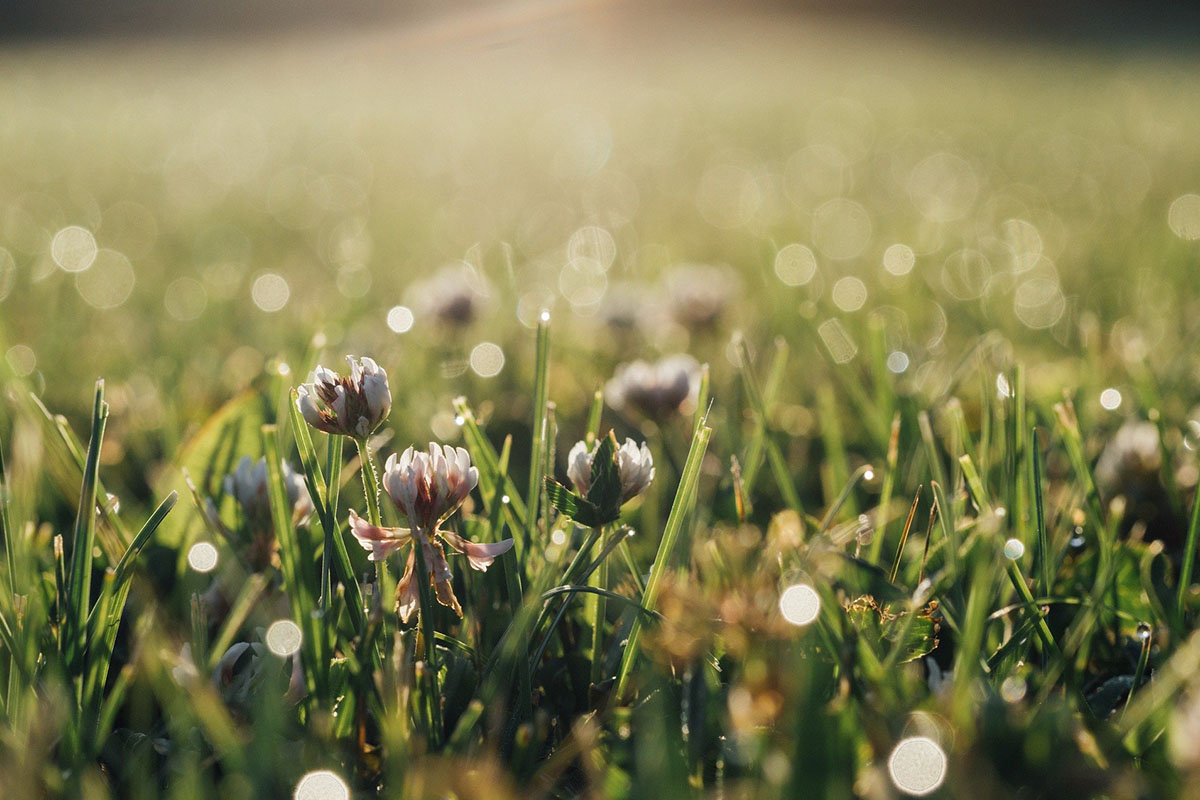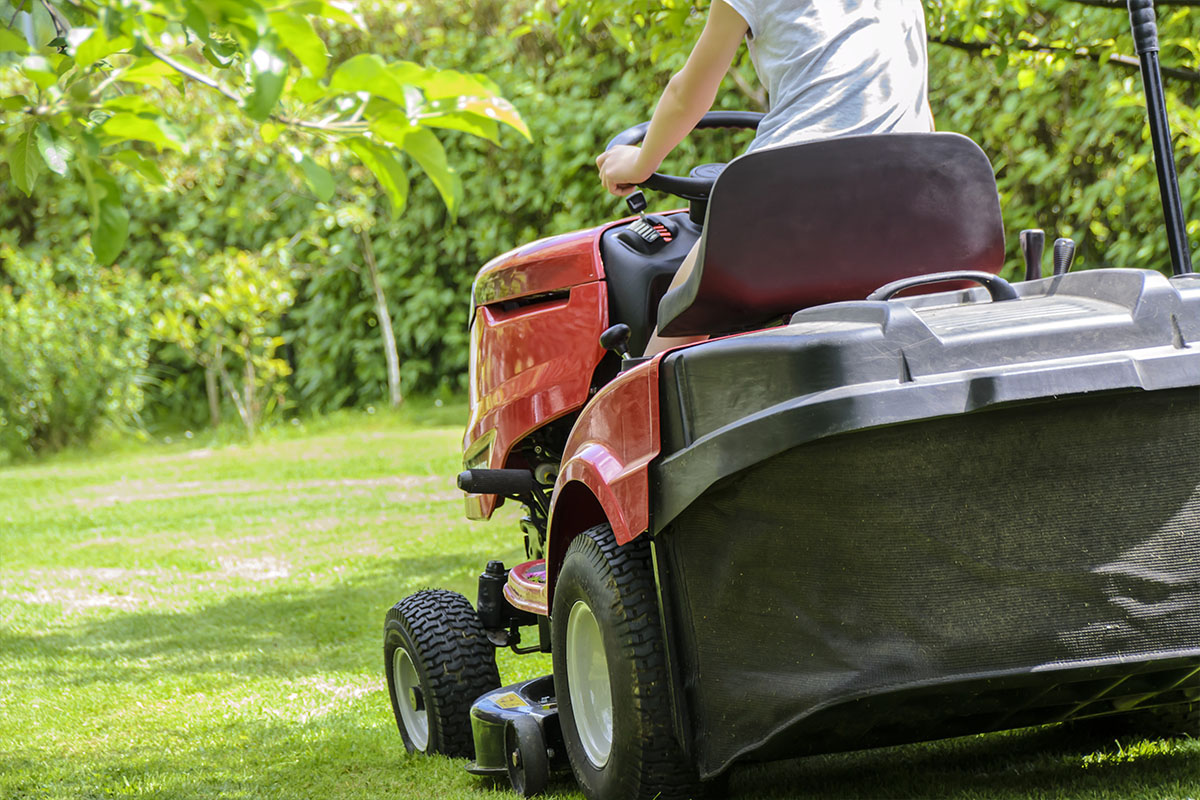Photo by Oregon State University Extension via Flickr. Photo used according to CC BY-SA 2.0 license.
After what seemed like a fairly cool September, we enjoyed a lot of warmer temperatures throughout the past few weeks of October here in the New River Valley. The team at Green Care has certainly enjoyed the nice weather as we’ve been busy with our many fall services for our clients’ lawns.
As we head into late fall now, we’ve begun those services that specifically help prepare the turf for winter. This includes our round 5, late fall treatments, which focus on heavy fertilization.
When we think about fertilization for our lawns, we often think of growth. And this late fall fertilization does lead to growth—just not the type of growth you can see! That’s because when we’re dealing with turf growth, there’s really two types: top growth (or shoot growth) and root growth. Most homeowners tend to think just about top growth when considering whether their grass is growing. That makes sense because this top growth is certainly more evident and is the type of growth that causes you to have to mow every week (or more, in some seasons)! But really, the root growth of your turf is even more important. We’ve said it before here on our blog, but it’s really true—healthy roots lead to a healthy turf!
Top Growth (Shoot Growth) for Cool Season Grasses
Top growth of your turf is, of course, that in the part of the grass plant that occurs above the soil. In cool season grasses, this includes the crown and the leaves (blades), and in mature, unmowed grass it also includes a seed head. See this diagram from Penn State Extension for a nice visual. This is that nice green part of the grass plant that you think of when you think of a desirable lawn.
Top growth in cool season grasses is most efficient at air temperatures of 60-75F. That’s why we see these grasses in our area doing their best growing in the spring and fall.
Besides temperature, moisture (rainfall), oxygen levels (good aeration and drainage), and fertilization, specifically nitrogen fertilizer, can strongly affect top growth. However, the health of the roots is also a big factor for the health of the grass plant as a whole.
Root Growth for Cool Season Grasses
Root growth occurs in the below-ground part of a grass plant that “anchor it in the soil and take up water and nutrients. Turfgrass roots are fibrous, branching, and very slender,” according to Penn State Extension. As root growth increases, the root system becomes stronger in its ability to absorb water and nutrients from the soil and transmit them to the other parts of the plant! That means healthy roots can lead to a lot of desirable traits for turfgrass, including increased plant density, increased drought tolerance, and better competition against weeds.
Like top growth, root growth is affected most by temperature—in this case soil temperature, moisture, and oxygen. However, for cool season grasses, root growth is most efficient at soil temperatures of 55-65F. (SFM) That means in the NRV, the best root growth can happen a little earlier in the spring and a little later in the fall than top growth. Other factors that can affect root growth and development are soil pH, herbicides, diseases, insects, and fertilization.
In regards to fertilization, Sports Field Management notes:
“As the levels of N applied to turfgrasses increase, the amount of shoots increases while the amount of rooting decreases. Time nitrogen applications so as to maximize root growth…Take care not to overly stimulate shoot growth during periods environmentally unsuitable for root growth (i.e. in the summer for cool-season grasses).”
Balancing Root Growth vs. Top Growth
With all this in mind, hopefully we’ve convinced you of the importance of seeking ways to enhance root growth of your turf. Here are just a few:
- Keep soil well aerated
- Use proper mowing heights
- Use proper watering techniques during dry periods
- Time fertilizer applications to maintain a healthy balance between top growth and root growth
We at Green Care seek to do these things and more for our clients’ lawns as well. That’s one reason that we do our late fall fertilizer application. Because even though top growth slows down in the late fall, a late fall fertilization helps grow and strengthen your turf’s roots and keep weed competition down as we head into winter. This helps leads to a strong and healthy turf with nice top growth when spring comes back around!
If all this talk of top and root growth has you feeling overwhelmed, talk to Green Care today. We will provide you with a free site visit to determine the needs of your lawn. Get in touch with us to get started!

